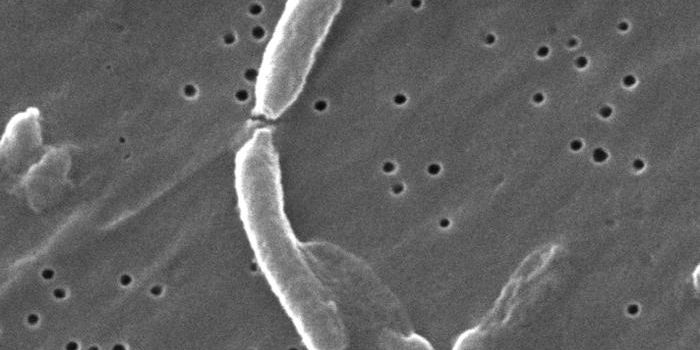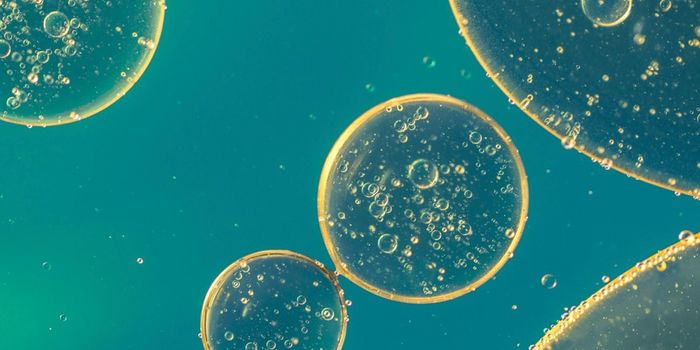What's that smell?
Did you know that bacteria make us humans and other animals smell the way we do? On top of that, animals use that smell to communicate with each other.
The “fermentation hypothesis of chemical recognition” says that bacteria in the scent glands of mammals generate metabolites with specific odors that animals use to communicate with each other. What’s more, this hypothesis explains how variations in these chemical signals are actually due to variations in those populations of bacteria.
Image: Muscle and Fitness
Let’s start with humans, Corynebacterium is responsible for that distinct “body odor” that emanates from our armpits. That odor is caused by 3-methyl-2-hexenoic acid (3M2H) and 3-hydroxy-3-methylhexanoic acid (HMHA). It turns out that the precursors for these chemicals are cleaved by a zinc-dependent bacterial aminoacylase.
In one study, researchers isolated bacteria from the human axilla (a fancy word for armpit). They identified 19 strains of Corynebacterium and 25 strains of Staphylococcus. Curiously, only isolates of Corynebacterium, not Staphylococcus, produced 3M2H or HMHA from the precursors 3M2H-Gln or HMHA-Gln, indicating that these strains produced an Nα-acylglutamine aminoacylase.
So, what’s the use of human body odor? It’s safe to say that most people think body odor smells bad - it’s definitely not attractive to other humans. Some researchers think that may be the point - or at least it was at some point in our evolution. Body odor may have been used by early humans as a way to assert dominance or repel rivals.
Things are a little more clear cut when it comes to mice, however. Mice use odors to attract mates of the same species and to repel rats. One of these odor chemicals is trimethylamine, which is specific for the olfactory receptor TAAR5. Trimethylamine synthesis requires two steps, one of which involves bacteria. We’ve all smelled trimethylamine before, it’s the stinky smell of bad breath and spoiled food!
In humans, trimethylamine is the byproduct of bacteria metabolizing dietary choline, and researchers wanted to know if the same held true for mice. To figure things out, they collected urine from mice that were fed a choline/methionine-free diet or that were treated with an antibiotic. Sure enough, these mice produced less trimethylamine in their urine than control mice.
Likewise, urine from wild type mice contained trimethylamine that activated its receptor TAAR5 (assayed with a reporter gene), but urine from mice on the choline-free diet or treated with antibiotics did not activate TAAR5. These findings suggest that bacteria produce trimethylamine from dietary choline.
While trimethylamine is produced by commensal bacteria, pathogens produce their own array of odors. Mice have receptors in their vomeronasal organ that recognize formylated peptides that are produced by tissue damage or bacterial infection. There are also chemosensory cells in the respiratory epithelium that detect bacterial quorum sensing molecules called acyl-homoserine lactones.
Next are the meerkats. These members of the mongoose family are native to South Africa. They produce a smelly paste from a pouch beneath their tails. They use this paste to mark their territories, applying it to plants, rocks, and their meerkat pals. Researchers found over 1,000 types of bacteria and some 220 odorous chemicals in the stinky paste. The key finding was that specific odors are produced by specific microbial communities - a specific meerkat family smells the way it does because of its own specific microbes.
The group detected five main phyla of bacteria in the meerkats’ anal pouch - Proteobacteria, Firmicutes, Bacteroidetes, Actinobacteria, and Fusobacteria. Specific genera of bacteria found in the paste were Porphyromonas, Fusobacterium, Anaerococcus, and Campylobacter.
The researchers also found that subordinate and dominant male meerkats had different bacterial communities in their pouches. However, there were no significant differences among dominant and subordinate females.
Finally, like meerkats, hyenas, deposit a scented paste from anal scent pouches to communicate with other hyenas. In one study, researchers used scanning electron microscopy to look for bacteria in the scent pouches of both spotted and striped hyenas (two groups that differ rather significantly in their lifestyles and behavior).
They found that the bacterial communities differed between spotted and striped hyenas, but all communities were largely made up of fermentative anaerobes - specifically, species from the order Clostridiales. For the spotted hyenas, they identified Clostridiales from the genera Anaerococcus, Clostridium, Fastidiosipila, Finegoldia, Murdochiella, Peptoniphilus, and Tissierella. The bacterial communities differed, however, based on sex and female reproductive status.
Next time you reach for your deodorant, remember all those little bacteria living in your armpits!
Sources: Bioessays, Journal of Biological Chemistry, Current Biology, Scientific Reports, PNAS









